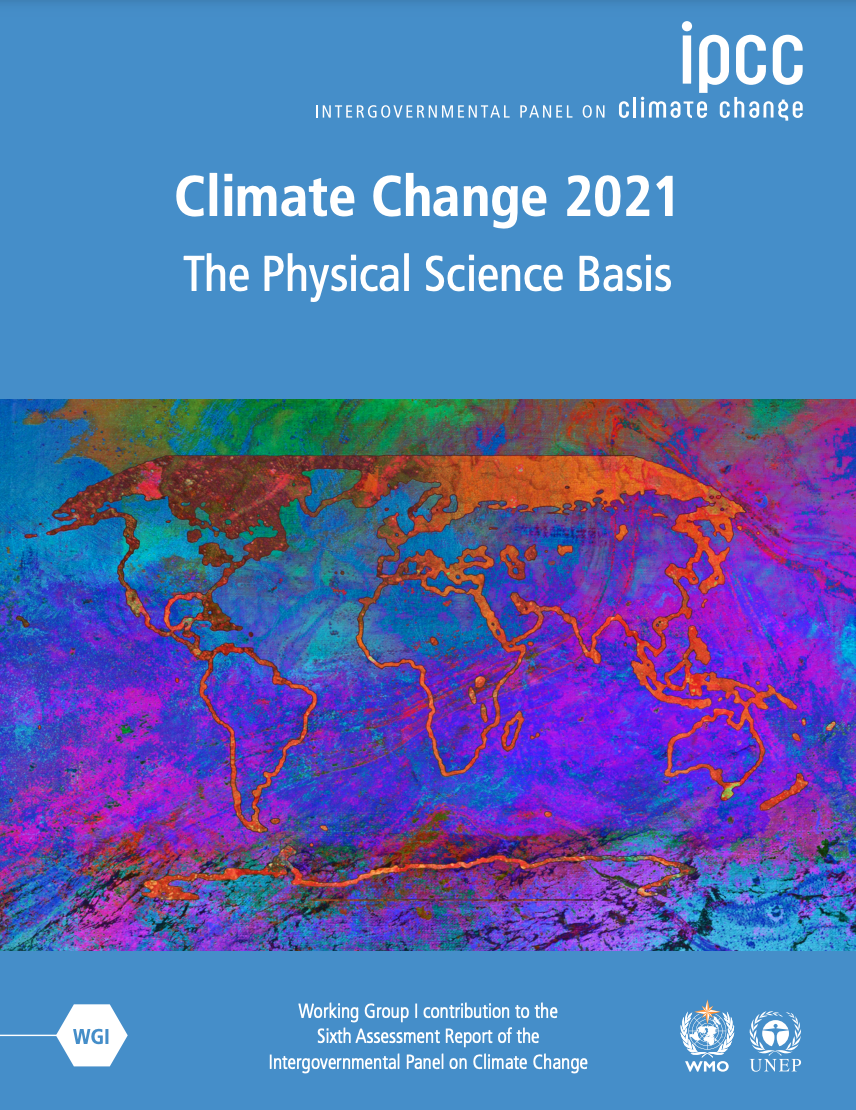I’ve seen so many references on social media about this new report from the United Nation’s Intergovernmental Panel on Climate Change (IPCC) which released the first instalment of its 6th Assessment Report (AR6). The report will be completed in 2022.
Created in 1988 by the World Meteorological Organization (WMO) and the United Nations Environment Programme (UNEP), the objective of the IPCC is to provide governments at all levels with scientific information that they can use to develop climate policies. IPCC reports are also a key input into international climate change negotiations. For the assessment reports, IPCC scientists volunteer their time to assess the thousands of scientific papers published each year to provide a comprehensive summary of what is known about the drivers of climate change, its impacts and future risks, and how adaptation and mitigation can reduce those risks. The IPCC does not conduct its own research.
The report provides new estimates of the chances of crossing the global warming level of 1.5°C in the next decades, and finds that unless there are immediate, rapid and large-scale reductions in greenhouse gas emissions, limiting warming to close to 1.5°C or even 2°C will be beyond reach.
The report shows that emissions of greenhouse gases from human activities are responsible for approximately 1.1°C of warming since 1850-1900, and finds that averaged over the next 20 years, global temperature is expected to reach or exceed 1.5°C of warming. This assessment is based on improved observational datasets to assess historical warming, as well progress in scientific understanding of the response of the climate system to human-caused greenhouse gas emissions.
The report forecasts that in the coming decades, climate changes will increase in all regions. For 1.5°C of global warming, there will be increasing heat waves, longer warm seasons and shorter cold seasons. At 2°C of global warming, heat extremes would more often reach critical tolerance thresholds for agriculture and health. Climate change is bringing multiple different changes in different regions – which will all increase with further warming. These include changes to wetness and dryness, to winds, snow and ice, coastal areas and oceans.
- Climate change is intensifying the water cycle. This brings more intense rainfall and associated flooding, as well as more intense drought in many regions.
- Climate change is affecting rainfall patterns. In high latitudes, precipitation is likely to increase, while it is projected to decrease over large parts of the subtropics. Changes to monsoon precipitation are expected, which will vary by region.
- Coastal areas will see continued sea-level rise throughout the 21st century, contributing to more frequent and severe coastal flooding in low-lying areas and coastal erosion. Extreme sea-level events that previously occurred once in 100 years could happen every year by the end of this century.
- Further warming will amplify permafrost thawing, and the loss of seasonal snow cover, melting of glaciers and ice sheets, and loss of summer Arctic sea ice.
- Changes to the ocean, including warming, more frequent marine heatwaves, ocean acidification, and reduced oxygen levels have been clearly linked to human influence. These changes affect both ocean ecosystems and the people that rely on them, and they will continue throughout at least the rest of this century.
- For cities, some aspects of climate change may be amplified, including heat (since urban areas are usually warmer than their surroundings), flooding from heavy precipitation events and sea-level rise in coastal cities.
“We must treat climate change as an immediate threat. It is time to get serious because every ton of CO2 emission adds to global warming. We must decarbonize faster. We cannot undo the mistakes of the past, but this generation of conscious citizens can make things right. This generation can make systemic changes.”
This is a critical time for companies in the materials and chemicals markets to take action especially since the chemical industry is one of the biggest emitters of greenhouse gas (GHG). Stabilizing the climate will require strong, rapid and sustained reductions in GHG emissions and reaching net-zero CO2 emissions.
Not only that, the chemical/petrochemical industry is typically at the forefront of climate-change related risks given most of the manufacturing facilities are clustered in big industrial areas, and some are particularly exposed to regions prone to extreme weather events. When industrial facilities fail to adequately prepare for extreme storms, wildfires, earthquakes, heat waves, floods, rising sea levels and other natural disasters, hazardous chemicals stored onsite can ignite, explode and there may be dangerous and even catastrophic releases that threaten the health and safety of workers and the public. In the USA, almost 4,000 facilities – many of which residential communities – face a greater threat of a natural disaster.
Check out the IPCC video for more information on their latest climate change report.




